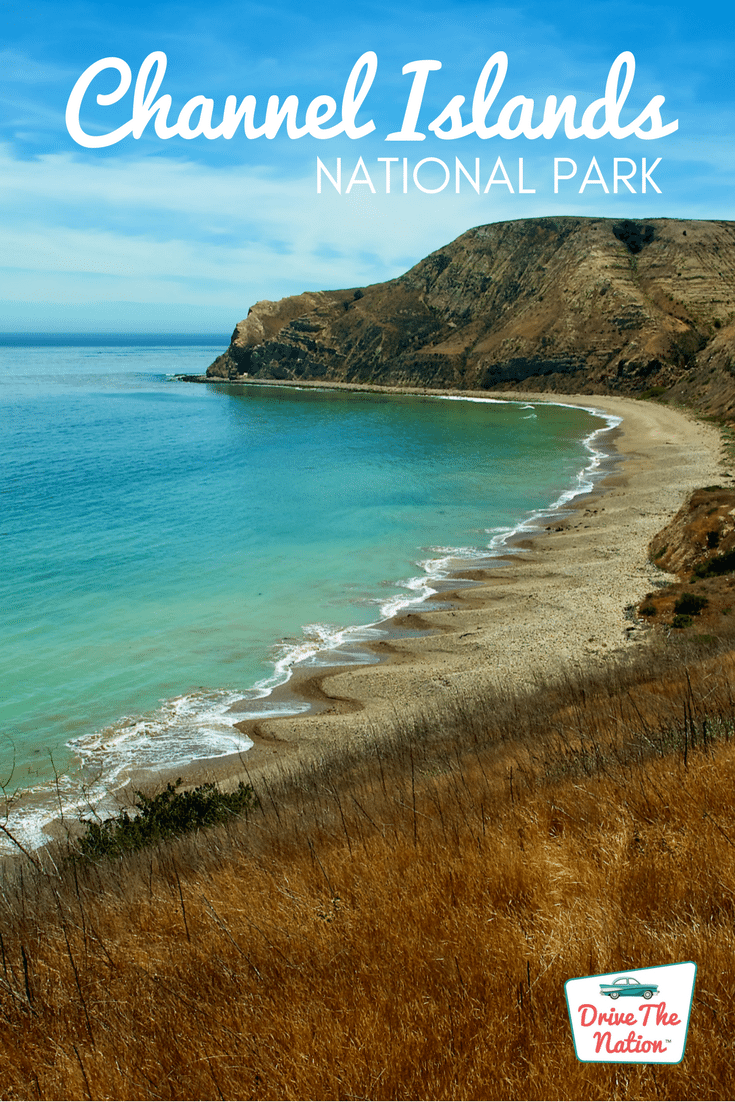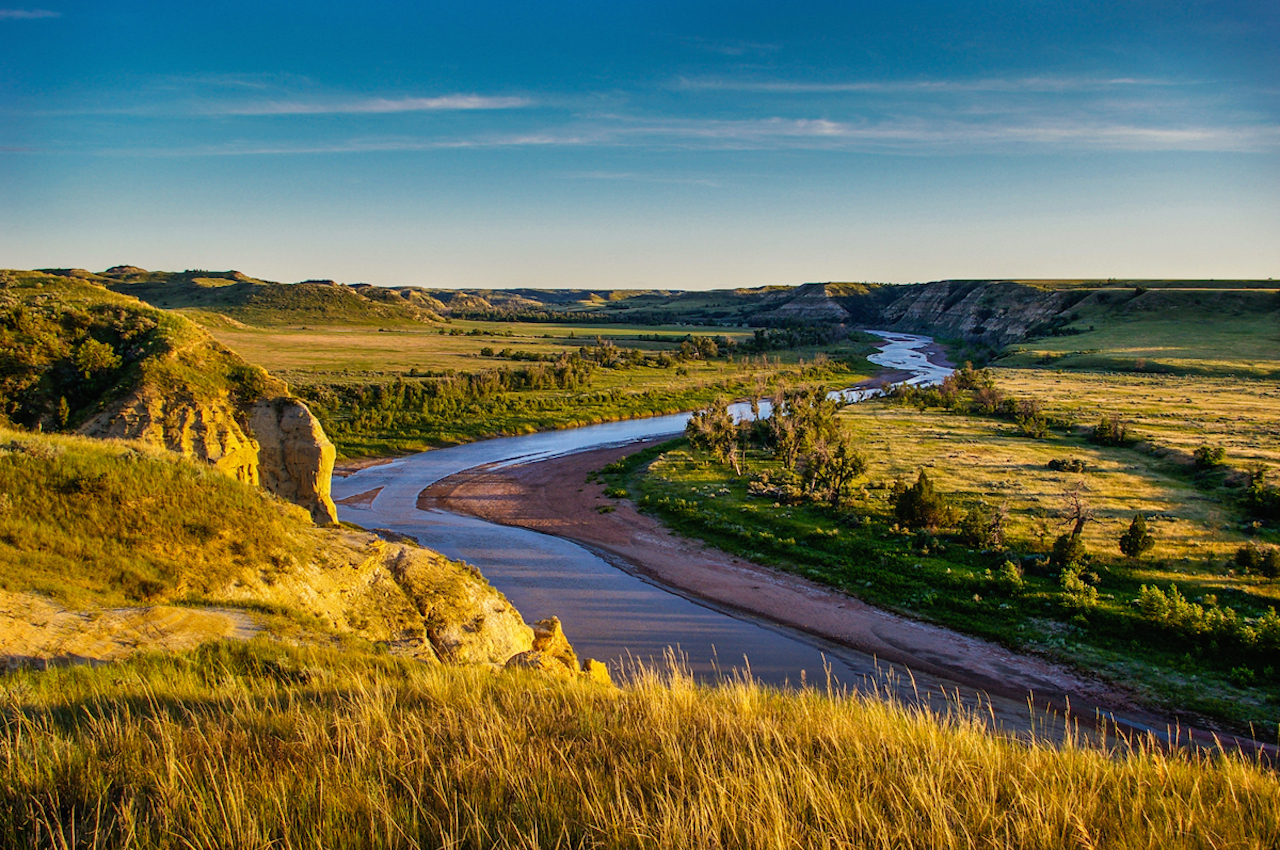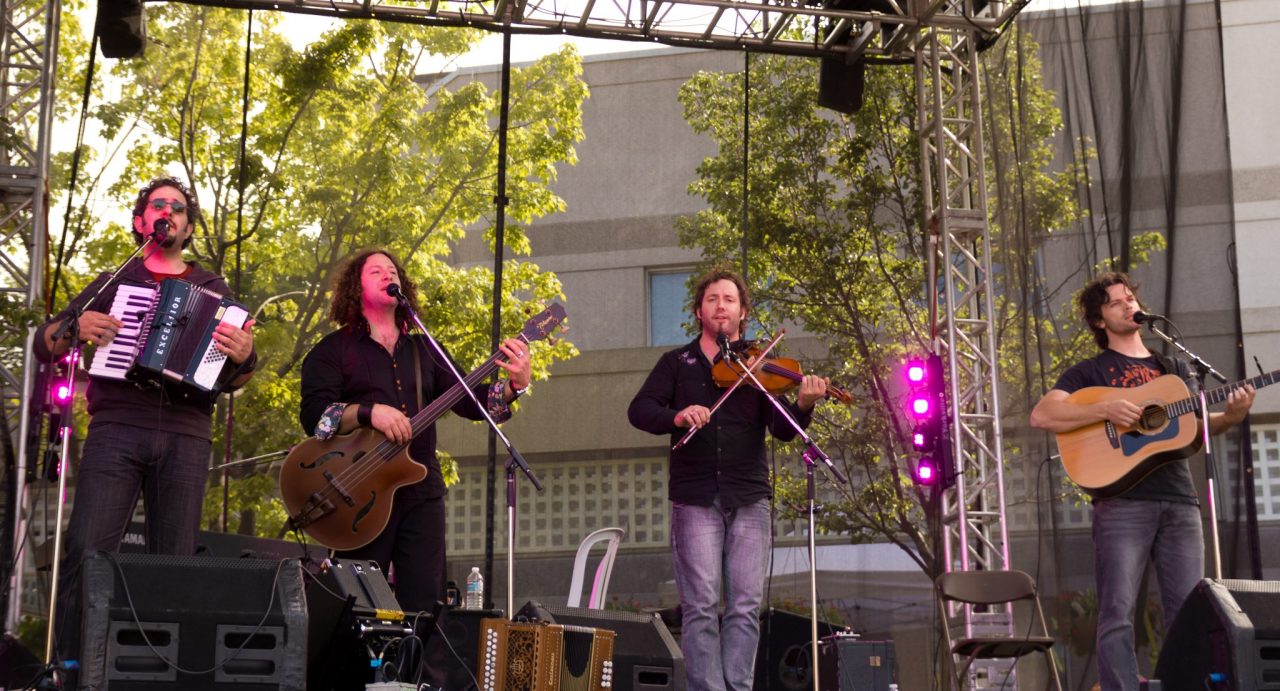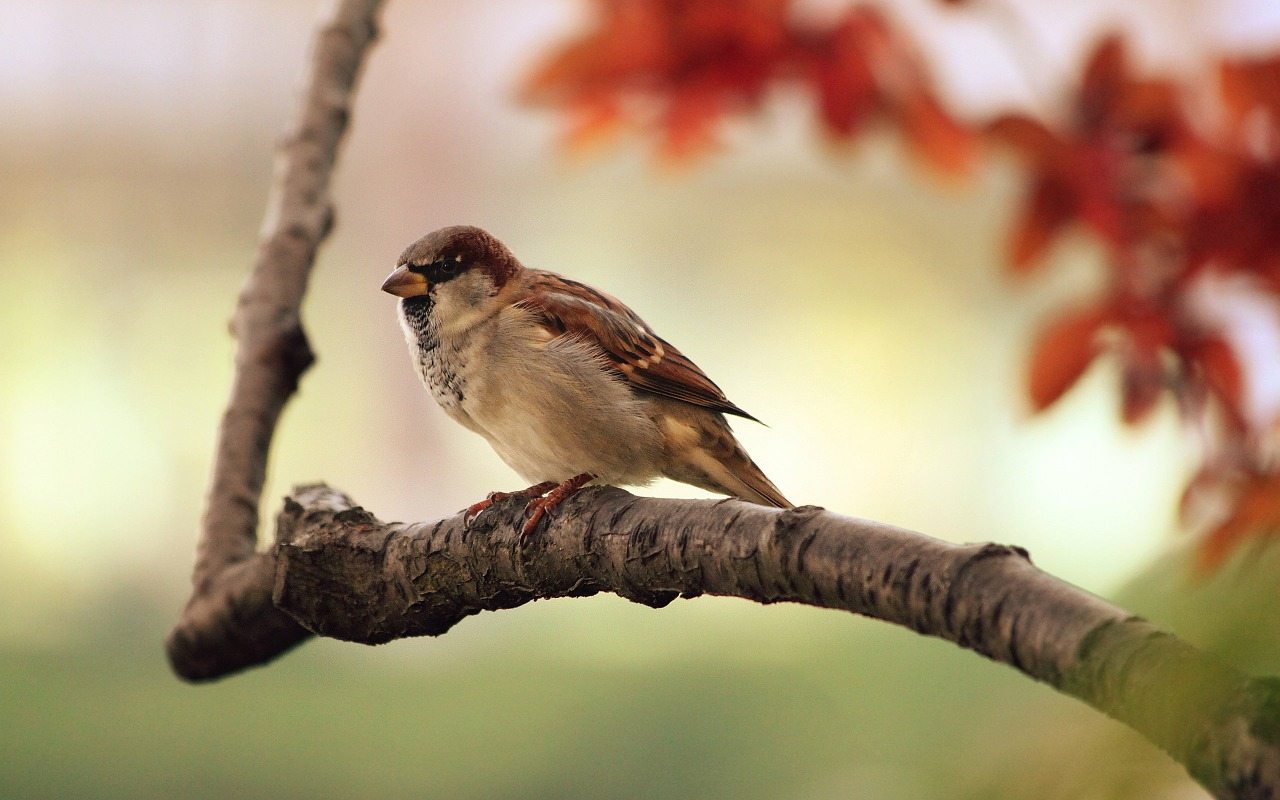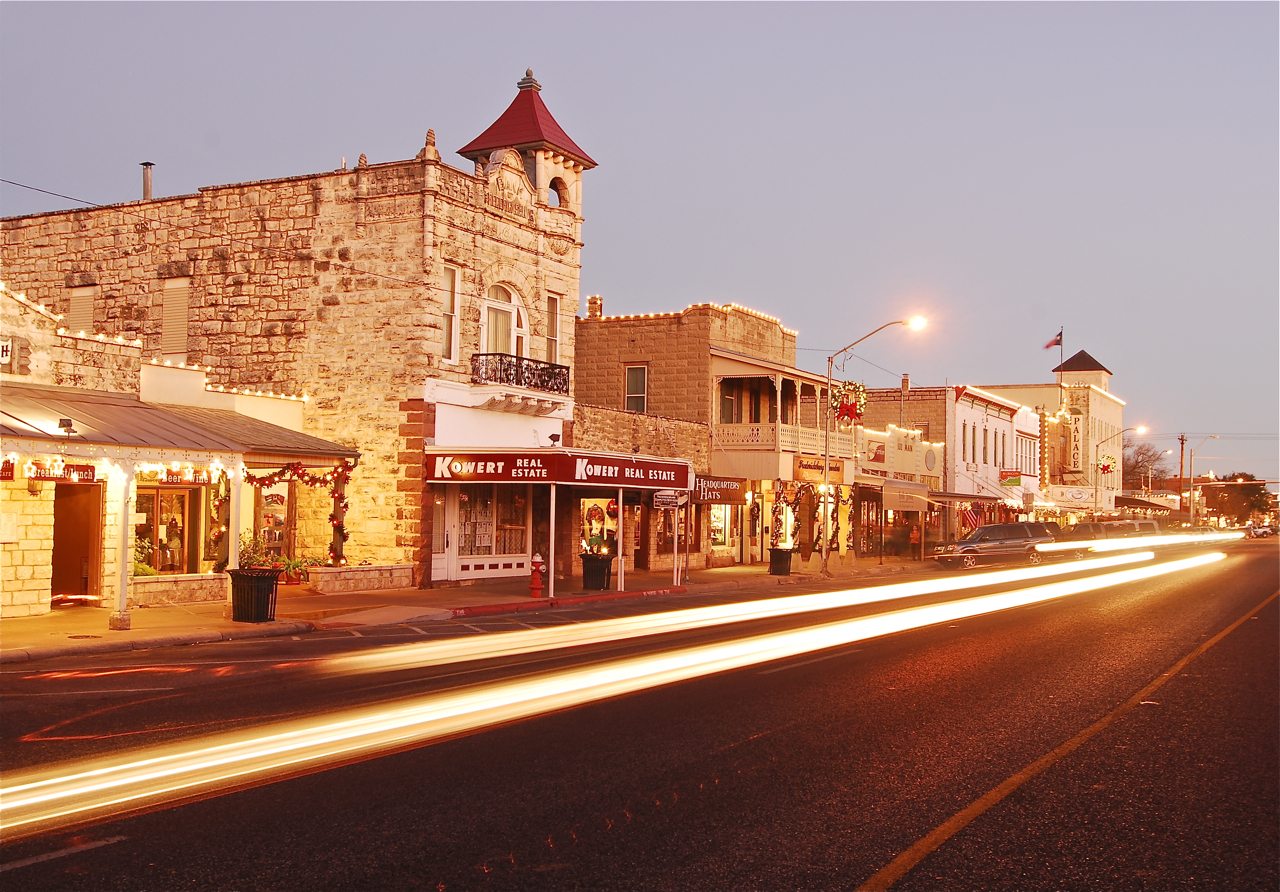The Channel Islands are among the USA’s most remote destinations, even though they are just off the California coast. They are among the least-visited of our National Parks. For more than 10,000 years, people have called these islands home. Today you can find some of the best-preserved archeological sites on the Pacific coast here. Begin at the visitors’ center in Ventura in the Ventura Harbor or the Outdoor Santa Barbara Visitor Center, for an introduction to the islands.
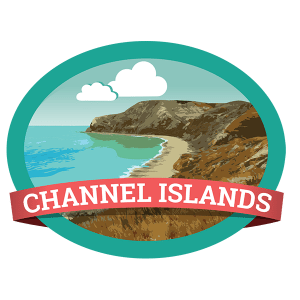
Public boat transportation is available throughout the year, by park concessionaire Island Packers; the trip to and from these islands may offer glimpses of seals, sea lions, dolphins, or humpback whales. Public airplane transportation is also an option to Santa Rosa Island by Channel Islands Aviation, out of Camarillo airport.
Plan ahead to make your visit to one or more of these five islands as enjoyable as possible. Keep in mind that there are no services, no food stores, no gear rental shops on the islands, nor are there any ways to fix what you may have forgotten, once you have arrived. We recommend you aim for one of the two largest of the Channel Islands, Santa Cruz or Santa Rosa.
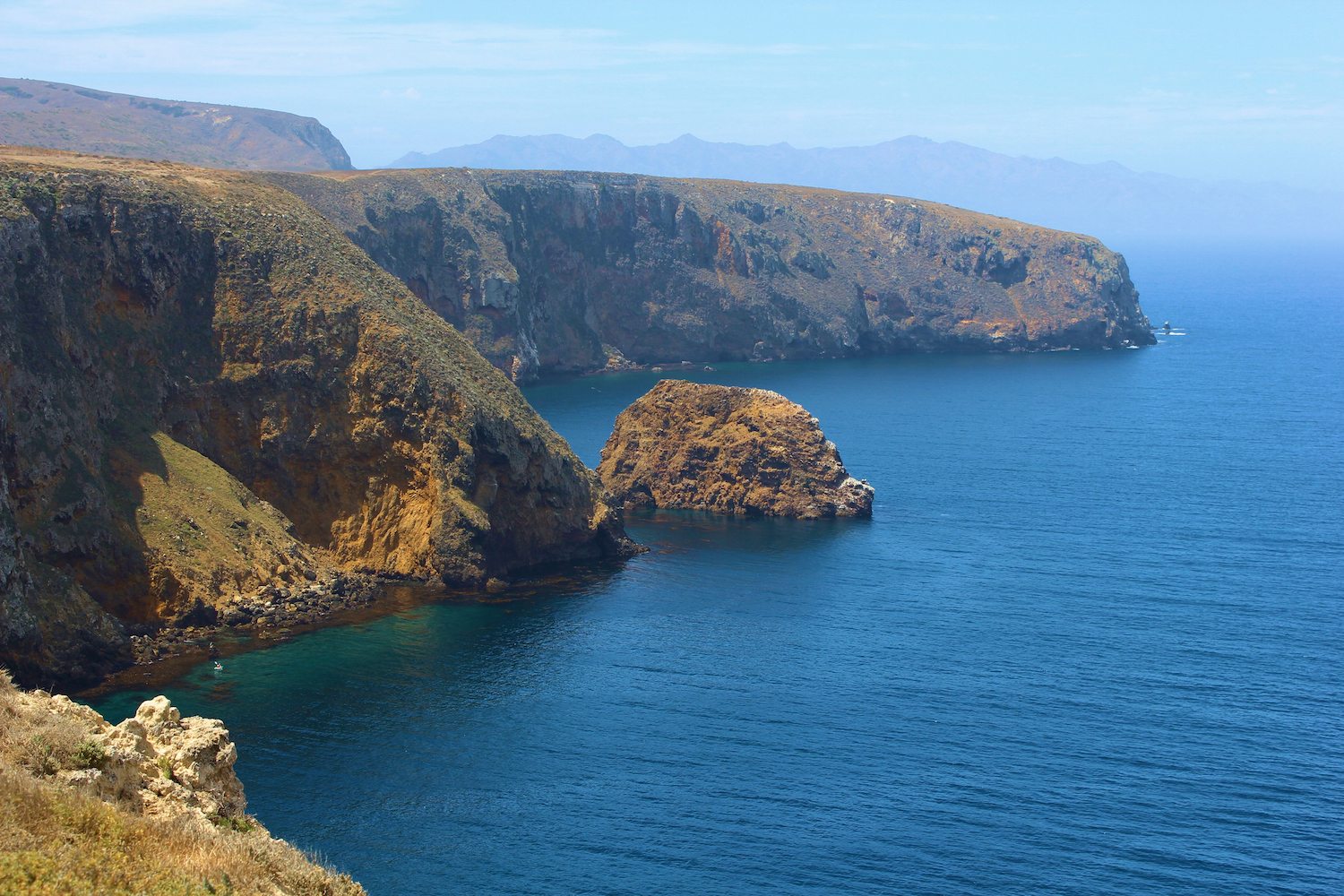
Santa Cruz Island – called “Limuw” (“in the sea”) by the Chumash people who made their home here for thousands of years – is the largest island in California, at 96 square miles. That is 1/12 the size of Rhode Island. Go for a day trip, or camp on the island. This is the easiest island to get to, offers the best weather, has the most recreational activities, and is ranked highest by visitors. The old Scorpion Ranch House is now the visitors’ center. Magnificent coastal scenery abounds, with more than seventy miles of rocky coast, tidal pools, deep canyon valleys and two mountain ranges with peaks over 2,000 feet tall. Wildlife is everywhere: seals, pygmy foxes, island scrub jays, bald eagles, dolphins. Great hiking trails and a sea cave kayak tour await, or plan to snorkel in the clean, clear, chilly California water. The imaginative names for the natural features suggest the romance and beauty of the island: Scorpion Cove, Potato Cove Lookout, Motivation Ridge, and Smugglers Cove. Painted Cave, one of the deepest, largest sea caves in the world, is on the northwest coastline. On calm days, boats can enter it . Some hints about the island: Weekdays are less crowded than weekends. September and October are good due to weather and lack of fog. There are a couple of restrooms on this island (some of the islands have only outhouses). There are no shade trees on the hikes so wear a hat and bring plenty of water.
Santa Rosa, the second largest island in California, comprises 53,000 acres. At Santa Rosa, you go ashore by way of rubber dinghies at Water Canyon Beach, climb out and walk through the surf to the beach; the crew helps whenever you need it. Once on land, you are on your own.
One of the rarest pines in the world, a subspecies of Torrey Pines, grows here, all that remains of a widespread Pleistocene era forest. Consider a walk to Torrey Pines to get to know the island, and then return by way of the Cherry Canyon trail. The Chumash islanders who lived here until about 1820 called the island “Wima” (“driftwood”); thousands of federally protected archeological sites remain from their time. At Water Canyon campground you will find flushing toilets and clean, large bathrooms. This island can now be reached by plane through Channel Islands Aviation. It’s a beautiful, quick 25 minute flight from Camarillo Airport.
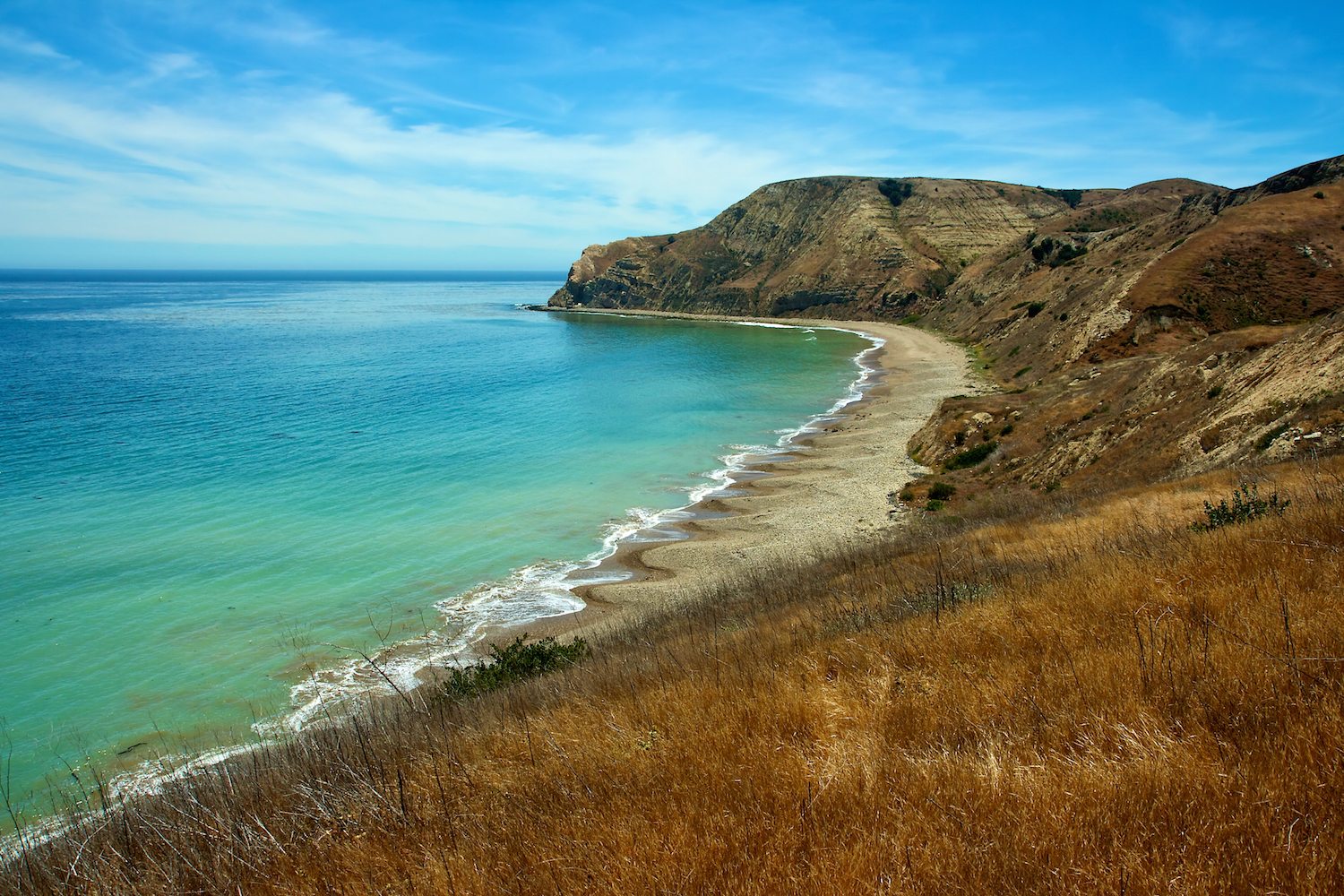
Anacapa Island is actually a cluster of three dramatic craggy islands, East, Middle, and West Anacapa, separated by water channels. East Anacapa is the one you visit. The island seems barren most of the year, with a grey misty gothic appeal. There is only one square mile to see, and just one hiking option, a figure eight loop of two miles of trails. Yet the scenery is otherworldly; and offers big views. You can see the old light station dating to 1932, and a small exhibit in the visitor center. The inaccessible lighthouse, dazzling coves, and Inspiration Point offer drama for your photography. Your arrival is at a landing where the boat does not truly dock, you climb up a ladder, and then up 157 steps to the top of the island. The best time to go is February or March to see the mounds of bright yellow Giant Coreopsis in bloom, alongside the contrasting hues of red Indian Paintbrush. The island carpeted in blossoms is a spectacular sight. Or visit in early June to see the Western Gull hatchlings. Avoid April with the infestation of kelp flies. Anacapa is a bird sanctuary, and has no trees, so hats are a must. There are limited places to sit. You will find outhouses on the island, but no other facilities and no drinking water.
Santa Barbara Island is reached by being adventurous, in this case, a windy skiff ride into shore. This smallest Channel Island has a lot of wildlife and many good scenic views in its one square mile of rugged cliffs and beaches, Culyer Harbor, Cardwell Point, and sweeping vistas including across to Prince Island and upward to Signal Peak, the island’s highest point at 635 feet above sea level. The wildlife ranges from Elephant Seals and Brown Pelican to the illusive island fox and pinnipeds at Point Bennett. Take the ranger-guided hike to Point Bennett and stop at the unique Caliche Forest – sand casts of ancient tree trunks and roots. Plant lovers may also come across rare or endangered endemic species such as the Santa Barbara Island Buckwheat, Santa Barbara Island Dudleya (Rose Moran, Santa Barbara Island Live-Forever), Santa Barbara Island Cream Cups, and Trask’s Locoweed. Every year, expert-guided volunteers participate in a habitat restoration program using these and other island species to help restore the environment as a nesting ground for Xantus’s Murrelets and Cassin’s Auklets. Other Santa Barbara Island birds include the Horned Lark, Scripps’s Murrelets, Orange-Crowned Warbler, Brandt’s Cormorants, and San Clemente House Finches.
Finally, there’s mysterious San Miguel Island – the westernmost of the Channel Islands. San Miguel has been closed since April 2014, the Navy stated they are looking for unexploded bombs from using the island for target practice. There’s been a good bit of publicity about this closure and various opinions about whether and why; you can find more on line. If San Miguel does reopen, you may wish to see this outpost, 60 miles from Ventura. The 9,500 acre island holds a monument to Juan Rodriguez Cabrillo; he died in 1542 and San Miguel is said to be his final resting place. There’s a monument on the island, honoring him.

